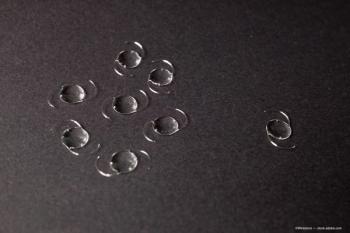
Evidence-based answers to lifestyle questions on glaucoma
Yvonne Ou, MD, reviewed the scientific evidence regarding the effects of various lifestyle practices on glaucoma and IOP.
As patients are turning to the Internet for health and medical information, ophthalmologists are increasingly facing the need to separate myth from fact on a variety of disease-related issues.
Sponsored:
Yvonne Ou, MD, assistant professor of ophthalmology, University of California-San Francisco, reviewed the scientific evidence regarding the effects of various lifestyle practices on glaucoma and intraocular pressure (IOP). Dr. Ou shared the advice she offers to patients on these topics during the Glaucoma Symposium CME at the
Exercise
Results from a number of studies indicate that aerobic exercise is associated with IOP lowering, and according to the findings of a meta-analysis [Clin J Sport Med. 2014;24(5):364-72], the change is greater among sedentary individuals than those who were already active and independent of exercise duration or intensity.
More:
“Based on this evidence, I encourage my patients to get moving, especially if they are not already,” said Dr. Ou. “For those who feel they cannot incorporate exercise into their lifestyle, I tell them that any kind of movement, even walking, may be beneficial. However, I also tell them they have to maintain their regimen because there is evidence showing as well that the effect of exercise on IOP does not persist when deconditioning occurs.”
Dr. Ou added that advising patients to find an exercise partner is helpful as it can be a motivator for starting and adhering to an exercise program. In addition, it can enable patients with impediments to exercising, such as reduced visual acuity or visual field defects, to be more active.
Another common exercise-related concern pertains to the effect of head-down yoga poses on IOP. While it is already known that shoulder stands or headstands increased IOP, a recent study evaluating the effects of four common yoga positions on IOP was recently published [PLoS ONE. 201;10(10):e0144505].
Dr. Ou noted that changes in IOP were the same among subjects with and without glaucoma, and among the positions evaluated, downward dog (Adho Mukha Svanasana) was associated with the greatest increase in IOP. However, the study also found the effect on IOP is transient, and there are no data showing that the yoga position-induced IOP changes are a factor for glaucoma progression.
Given this information, she acknowledged that it is difficult to advise patients. Until more data are available, the best thing is to consider any potential risk in the context of the individual’s stage of glaucoma and commitment to yoga.
“I have a patient with glaucoma who is a yoga instructor,” she said. “It is hard to tell someone whose livelihood depends on yoga to avoid head-down positions.”
Diet
Based on the results of several studies, Dr. Ou encourages patients to eat a healthy diet that includes a variety of fruits and vegetables, especially green leafy vegetables. This advice comes from studies showing that consumption of a diet rich in green leafy vegetables, or with a higher dietary nitrate intake (for which green leafy vegetables are an excellent source), seemed to protect against glaucoma.
More Glaucoma 360:
There is a biologic basis for the association considering that in one study, the reduced risk of glaucoma with increased dietary nitrate intake was greatest for glaucoma with early paracentral visual field loss at diagnosis, which has been associated with vascular dysregulation [JAMA Ophthalmol. 20015;134(3):294-303].
“We still need prospective studies to determine how eating green leafy vegetables affects glaucoma progression,” Dr. Ou explained. “In the meantime, there is no harm to increasing intake of green leafy vegetables–although patients on blood thinners, such as warfarin, need to be aware that green leafy vegetables are high in vitamin K and should discuss any increase in their intake with their doctor so that medication dosages can be adjusted.”
Acupuncture
Patients interested in alternative therapies may ask about acupuncture for managing their glaucoma. Based on available evidence, the simple answer seems to be that it is unlikely to be beneficial.
Dr. Ou noted that a recently published, well-designed prospective, randomized, masked, crossover study found that overall, diurnal IOP was unchanged in patients who underwent a series of 12 acupuncture sessions involving needle placement at eye- and non-eye-related acupoints [Am J Ophthalmol. 2015;160(2):255-65].
More:
“This was a small study, and more data are needed,” she said. “At this time, however, we can’t say that acupuncture will help glaucoma patients.”
Proactive practitioner
In the interest of identifying low-ocular perfusion pressure as an underlying issue for glaucoma progression despite good IOP control, Dr. Ou advised ophthalmologists to ask their patients about treatment for systemic hypertension.
Recently published results of the randomized SPRINT study [N Engl J Med. 2015;373(22):2103-16] showed that in a population of patients with increased cardiovascular risk, intensive treatment targeting a systolic blood pressure (SBP) < 120 mm Hg, significantly reduced cardiovascular events and cardiovascular event-related morbidity compared with standard treatment targeting SBP < 140 mm Hg. Although there was no difference between the two treatment arms in the incidence of serious adverse events, patients who had more intensive SBP lowering were more likely to report hypotension and syncope, Dr. Ou said.
Related:
“These safety findings, which are not unexpected, are very relevant to patients with glaucoma because blood pressure drives optic nerve blood flow,” Dr. Ou added. “We know from epidemiologic studies that lower ocular perfusion pressure (mean, systolic and diastolic) is associated with worse glaucoma prognosis.
“So when glaucoma is progressing despite good IOP control, ask patients to keep a blood pressure log so that you can identify diurnal fluctuation,” she said. “Then, communicate with the internist if you have any concern and think the patient’s glaucoma might benefit from less aggressive blood pressure control.”
Recent:
Dr. Ou added that while exercise also lowers blood pressure, ophthalmologists are not doing their patients harm by encouraging them to be physically active, considering data from the EPIC-NORFOLK eye study showing that active people had a lower risk of having low-ocular perfusion pressure compared with non-active individuals [Invest Ophthalmol Vis Sci. 2011;52:8186-92]. The analysis also showed the difference between groups was mediated by diastolic blood pressure rather than IOP.
Yvonne Ou, MD
Dr. Ou has no relevant financial interests to disclose.
Newsletter
Don’t miss out—get Ophthalmology Times updates on the latest clinical advancements and expert interviews, straight to your inbox.


















































.png)


